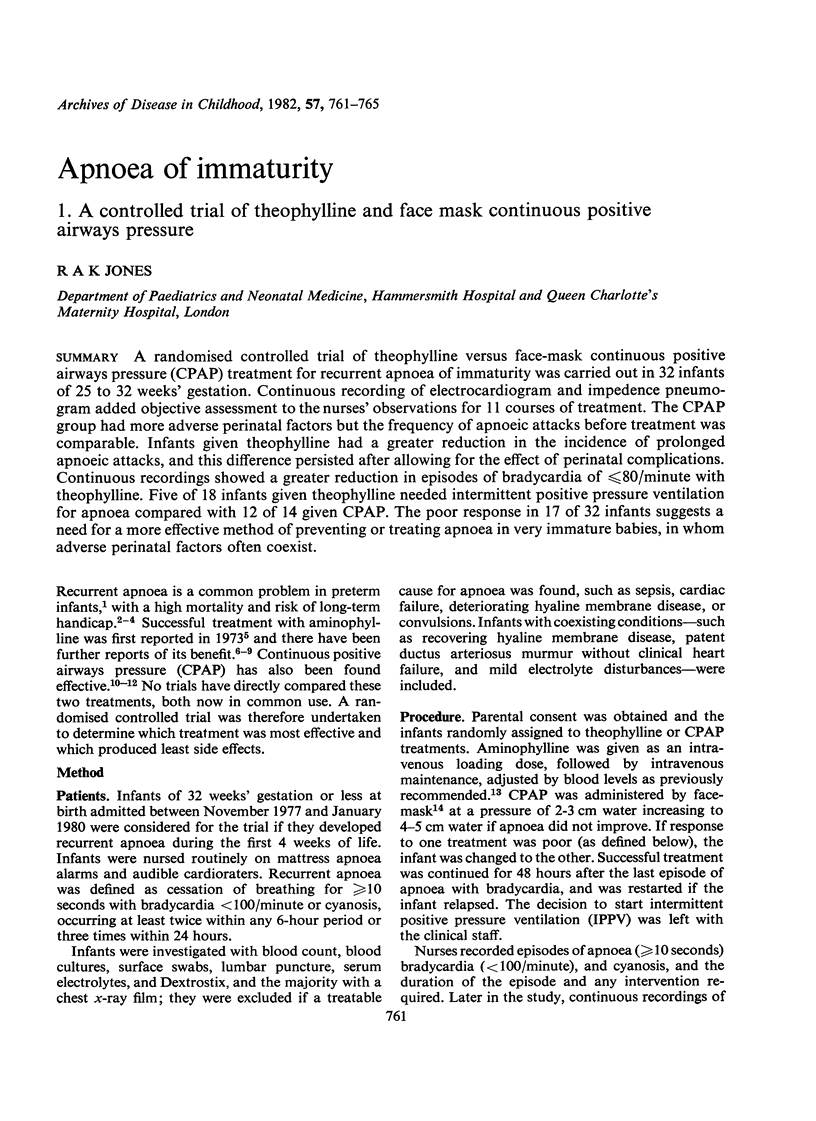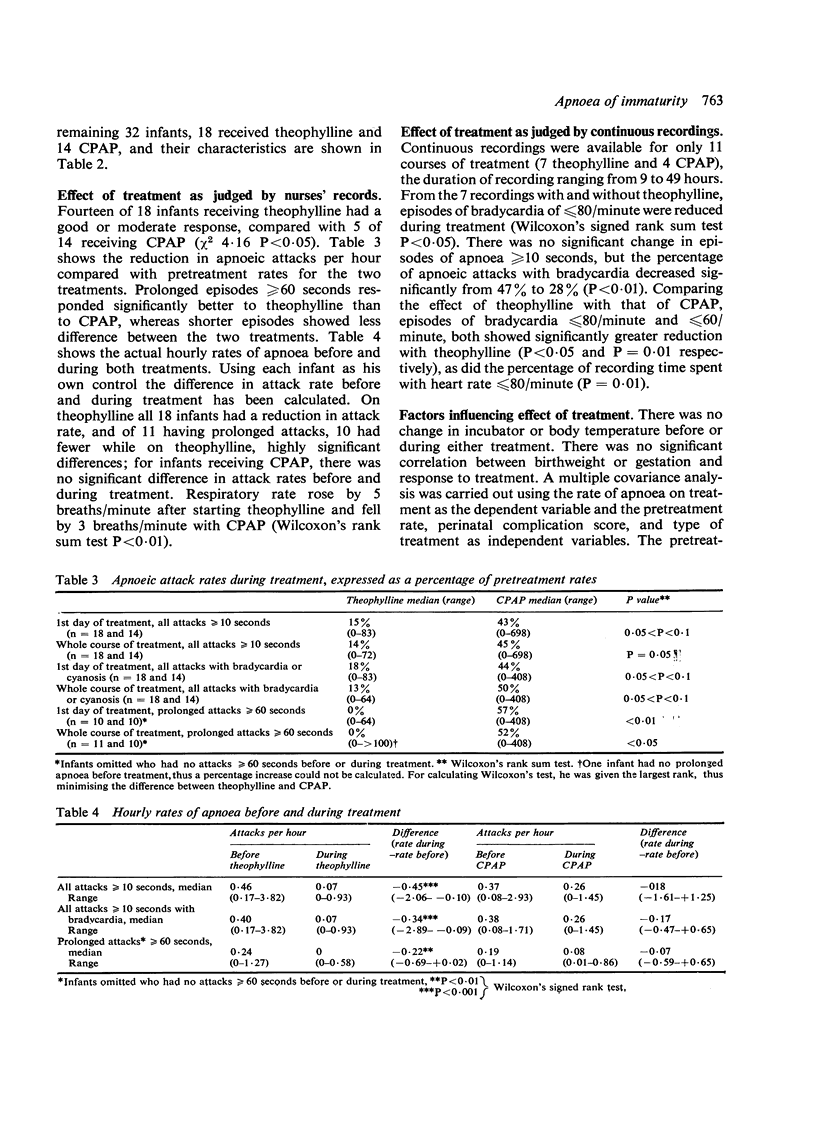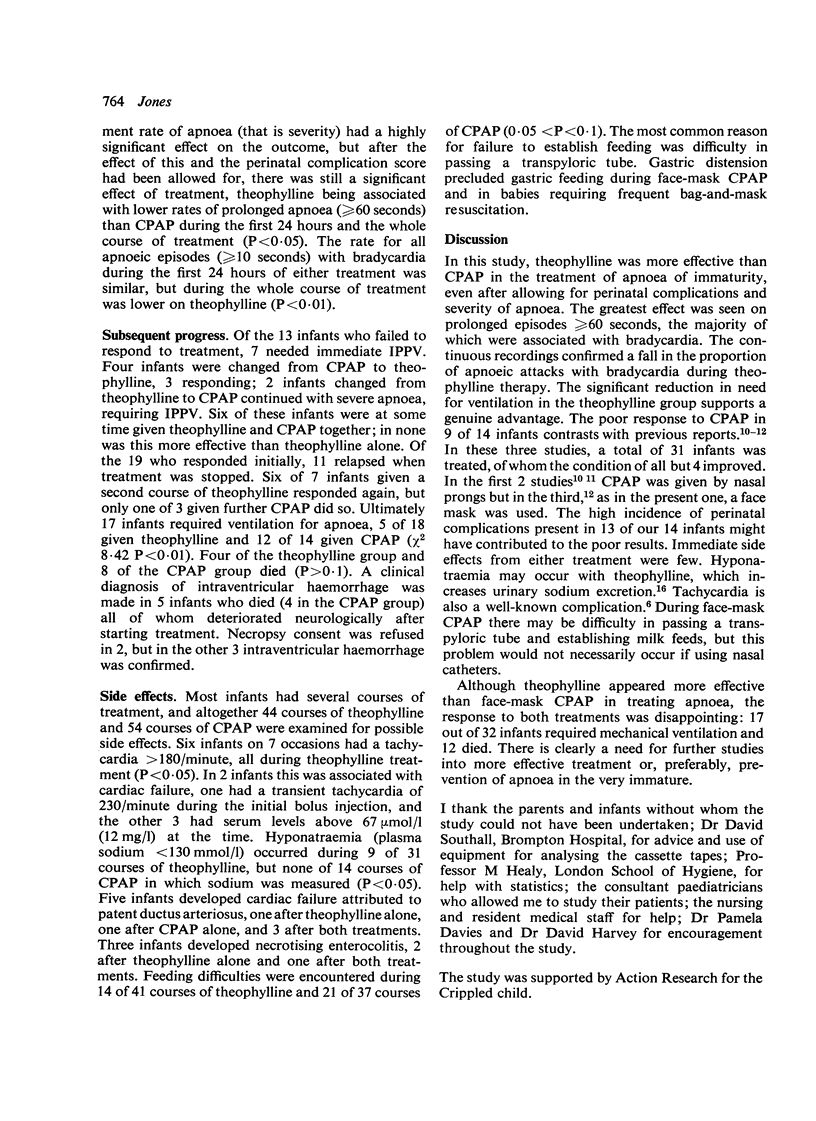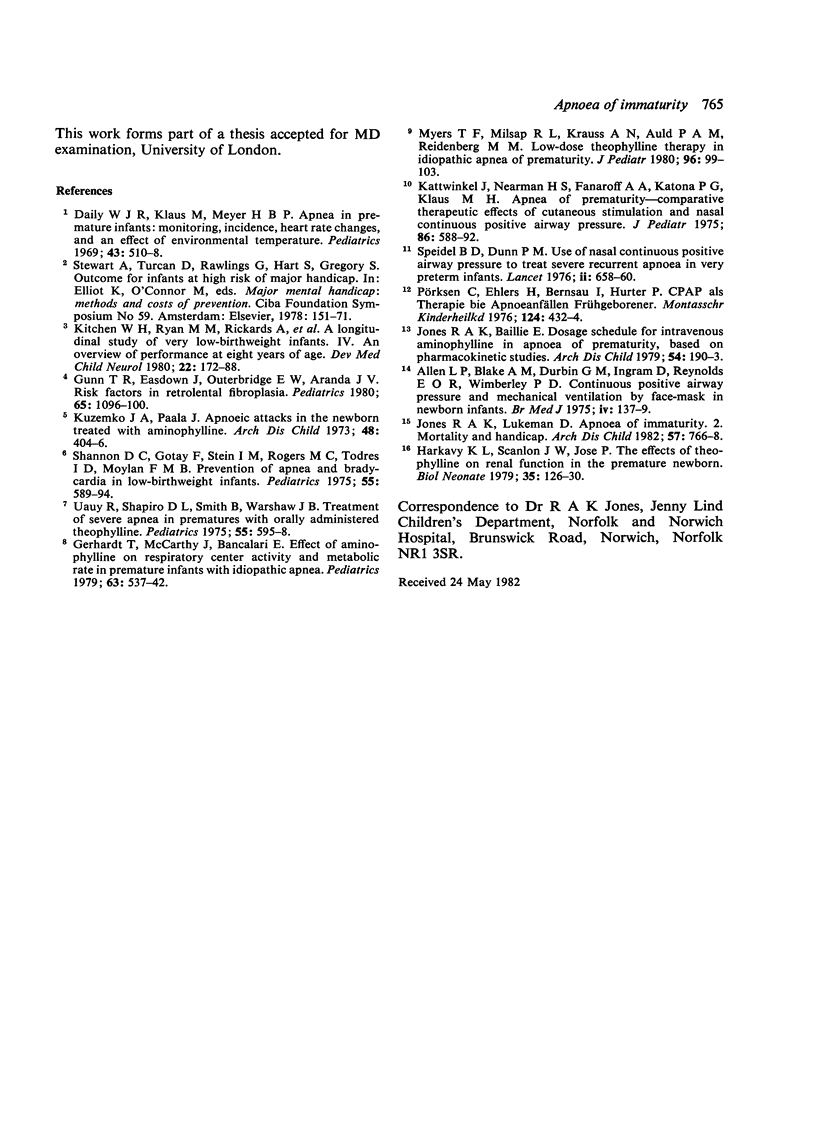Abstract
A randomised controlled trial of theophylline versus face-mask continuous positive airways pressure (CPAP) treatment for recurrent apnoea of immaturity was carried out in 32 infants of 25 to 32 weeks' gestation. Continuous recording of electrocardiogram and impedence pneumogram added objective assessment to the nurses' observations for 11 courses of treatment. The CPAP group had more adverse perinatal factors but the frequency of apnoeic attacks before treatment was comparable. Infants given theophylline had a greater reduction in the incidence of prolonged apnoeic attacks, and this difference persisted after allowing for the effect of perinatal complications. Continuous recordings showed a greater reduction in episodes of bradycardia of less than or equal to 80/minute with theophylline. Five of 18 infants given theophylline needed intermittent positive pressure ventilation for apnoea compared with 12 of 14 given CPAP. The poor response in 17 of 32 infants suggests a need for a more effective method of preventing or treating apnoea in very immature babies, in whom adverse perinatal factors often coexist.
Full text
PDF




Selected References
These references are in PubMed. This may not be the complete list of references from this article.
- Allen L. P., Blake A. M., Durbin G. M., Ingram D., Reynolds E. O., Wimberley P. D. Continuous positive airway pressure and mechanical ventilation by facemask in newborn infants. Br Med J. 1975 Oct 18;4(5989):137–139. doi: 10.1136/bmj.4.5989.137. [DOI] [PMC free article] [PubMed] [Google Scholar]
- Daily W. J., Klaus M., Meyer H. B. Apnea in premature infants: monitoring, incidence, heart rate changes, and an effect of environmental temperature. Pediatrics. 1969 Apr;43(4):510–518. [PubMed] [Google Scholar]
- Gerhardt T., McCarthy J., Bancalari E. Effect of aminophylline on respiratory center activity and metabolic rate in premature infants with idiopathic apnea. Pediatrics. 1979 Apr;63(4):537–542. [PubMed] [Google Scholar]
- Gunn T. R., Easdown J., Outerbridge E. W., Aranda J. V. Risk factors in retrolental fibroplasia. Pediatrics. 1980 Jun;65(6):1096–1100. [PubMed] [Google Scholar]
- Harkavy K. L., Scanlon J. W., Jose P. The effects of theophylline on renal function in the premature newborn. Biol Neonate. 1979;35(3-4):126–130. doi: 10.1159/000241163. [DOI] [PubMed] [Google Scholar]
- Jones R. A., Baillie E. Dosage schedule for intravenous aminophylline in apnoea of prematurity, based on pharmacokinetic studies. Arch Dis Child. 1979 Mar;54(3):190–193. doi: 10.1136/adc.54.3.190. [DOI] [PMC free article] [PubMed] [Google Scholar]
- Jones R. A., Lukeman D. Apnoea of immaturity. 2. Mortality and handicap. Arch Dis Child. 1982 Oct;57(10):766–768. doi: 10.1136/adc.57.10.766. [DOI] [PMC free article] [PubMed] [Google Scholar]
- Kattwinkel J., Nearman H. S., Fanaroff A. A., Katona P. G., Klaus M. H. Apnea of prematurity. Comparative therapeutic effects of cutaneous stimulation and nasal continuous positive airway pressure. J Pediatr. 1975 Apr;86(4):588–592. doi: 10.1016/s0022-3476(75)80158-2. [DOI] [PubMed] [Google Scholar]
- Kitchen W. H., Ryan M. M., Rickards A., McDougall A. B., Billson F. A., Keir E. H., Naylor F. D. A longitudinal study of very low-birthweight infants. IV: An overview of performance at eight years of age. Dev Med Child Neurol. 1980 Apr;22(2):172–188. doi: 10.1111/j.1469-8749.1980.tb04326.x. [DOI] [PubMed] [Google Scholar]
- Kuzemko J. A., Paala J. Apnoeic attacks in the newborn treated with aminophylline. Arch Dis Child. 1973 May;48(5):404–406. doi: 10.1136/adc.48.5.404. [DOI] [PMC free article] [PubMed] [Google Scholar]
- Myers T. F., Milsap R. L., Krauss A. N., Auld P. A., Reidenberg M. M. Low-dose theophylline therapy in idiopathic apnea of prematurity. J Pediatr. 1980 Jan;96(1):99–103. doi: 10.1016/s0022-3476(80)80339-8. [DOI] [PubMed] [Google Scholar]
- Pörksen C., Ehlers H., Bernsau I., Hürter P. CPAP als Therapie bei Apnoeanfällen Frühgeborener. Monatsschr Kinderheilkd. 1976 May;124(5):432–434. [PubMed] [Google Scholar]
- Shannon D. C., Gotay F., Stein I. M., Rogers M. C., Todres I. D., Moylan F. M. Prevention of apnea and bradycardia in low-birthweight infants. Pediatrics. 1975 May;55(5):589–594. [PubMed] [Google Scholar]
- Speidel B. D., Dunn P. M. Use of nasal continuous positive airway pressure to treat severe recurrent apnoea in very preterm infants. Lancet. 1976 Sep 25;2(7987):658–660. doi: 10.1016/s0140-6736(76)92468-5. [DOI] [PubMed] [Google Scholar]
- Uauy R., Shapiro D. L., Smith B., Warshaw J. B. Treatment of severe apnea in prematures with orally administered theophylline. Pediatrics. 1975 May;55(5):595–598. [PubMed] [Google Scholar]


